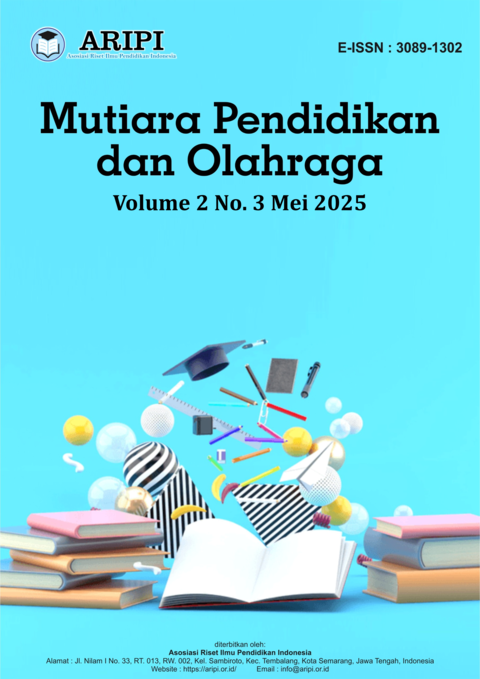Tingkat Kebugaran Jasmani dan Prestasi Akademik Peserta Didik SMPN 1 Batusangkar Kabupaten Tanah Datar
DOI:
https://doi.org/10.61132/mupeno.v2i3.333Keywords:
sical-Fitness-Level, Academic-Achievement, SchoolAbstract
The research problem is that students have low physical fitness. They appear lethargic, unmotivated, and struggle to focus on memorizing lessons. Additionally, many students are unable to complete several physical tests in physical education classes. Furthermore, the average student scores do not meet the learning objective criteria. This study uses a quantitative descriptive research method. The population consists of 787 students from grades VII, VIII, and IX of SMP Negeri 1 Batusangkar, Tanah Datar Regency. The sample was selected using the Proportionate Stratified Random Sampling technique, resulting in a sample size of 39 students. Data collection was conducted through physical fitness tests and students' average report card scores. The study found that, based on correlation analysis, the obtained r-value (rhitung) was 0.97, while the critical r-value (rtabel) at a significance level of α = 0.05 was 0.316. This indicates a significant relationship between physical fitness and academic achievement. In other words, the better a student's physical fitness, the better their academic performance, as confirmed by this study.
References
Abduljabar, B. (2011). Pengertian pendidikan jasmani. Ilmu Pendidikan, 1991, 36.
Alifah, S. (2021). Peningkatan kualitas pendidikan di Indonesia untuk mengejar ketertinggalan dari negara lain. CERMIN: Jurnal Penelitian, 5(1), 113. https://doi.org/10.36841/cermin_unars.v5i1.968
Arikunto, S. (2013). Prosedur penelitian: Suatu pendekatan praktik. Rineka Cipta.
Departemen Pendidikan Nasional. (2003). Kurikulum pendidikan jasmani. Depdiknas.
Dimyati, & Mudjiono. (2010). Belajar dan pembelajaran. Rineka Cipta.
Hidayat, A. A. (2007). Metode penelitian keperawatan dan teknik analisis data. Salemba Medika.
Mulyasa, E. (2011). Manajemen pendidikan. Remaja Rosdakarya.
Pedomanta Keliat, A. E. L., & Boby Hemi. (2019). Profil tingkat kebugaran jasmani dan kecukupan gizi. Jurnal Ilmiah Stok Bina Guna Medan, 7(2), 47–54.
Prastyawan, R. R., & Pulungan, K. A. (2022). Signifikansi kebugaran jasmani terhadap prestasi belajar siswa sekolah dasar. Jurnal Pendidikan Jasmani Indonesia, 18(2), 185–193. https://doi.org/10.21831/jpji.v18i2.55859
Risdiany, H. (2021). Pengembangan profesionalisme guru dalam mewujudkan kualitas pendidikan. Al-Hikmah: Jurnal Pendidikan dan Pendidikan Agama Islam, 3(2), 194–202. https://doi.org/10.31958/jt.v14i2.205
Risparyanto, A., & Fitriyanto, R. E. (2023). Pengaruh e-resources terhadap prestasi akademik yang dimediasi oleh perceived usefulness. Shaut Al-Maktabah: Jurnal Perpustakaan, Arsip dan Dokumentasi, 15(1), 103–117. https://doi.org/10.37108/shaut.v15i1.952
Rusman. (2011). Model-model pembelajaran: Mengembangkan profesionalisme guru. Rajawali Pers.
Slameto. (2010). Belajar dan faktor-faktor yang mempengaruhinya. Rineka Cipta.
Sugiyono. (2013). Metode penelitian kuantitatif, kualitatif dan R&D. Alfabeta.
Undang-Undang Republik Indonesia Nomor 11 Tahun 2022 tentang Keolahragaan. UU No 11 Pasal 61 (2022).
Downloads
Published
How to Cite
Issue
Section
License
Copyright (c) 2025 Mutiara Pendidikan dan Olahraga

This work is licensed under a Creative Commons Attribution-ShareAlike 4.0 International License.





